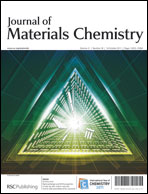Bandgap narrowing of titanium oxidenanosheets: homogeneous doping of molecular iodine for improved photoreactivity
Abstract
We developed a new strategy for homogeneous doping of iodine molecules (I2) to achieve bandgap narrowing of semiconducting metal


 Please wait while we load your content...
Please wait while we load your content...